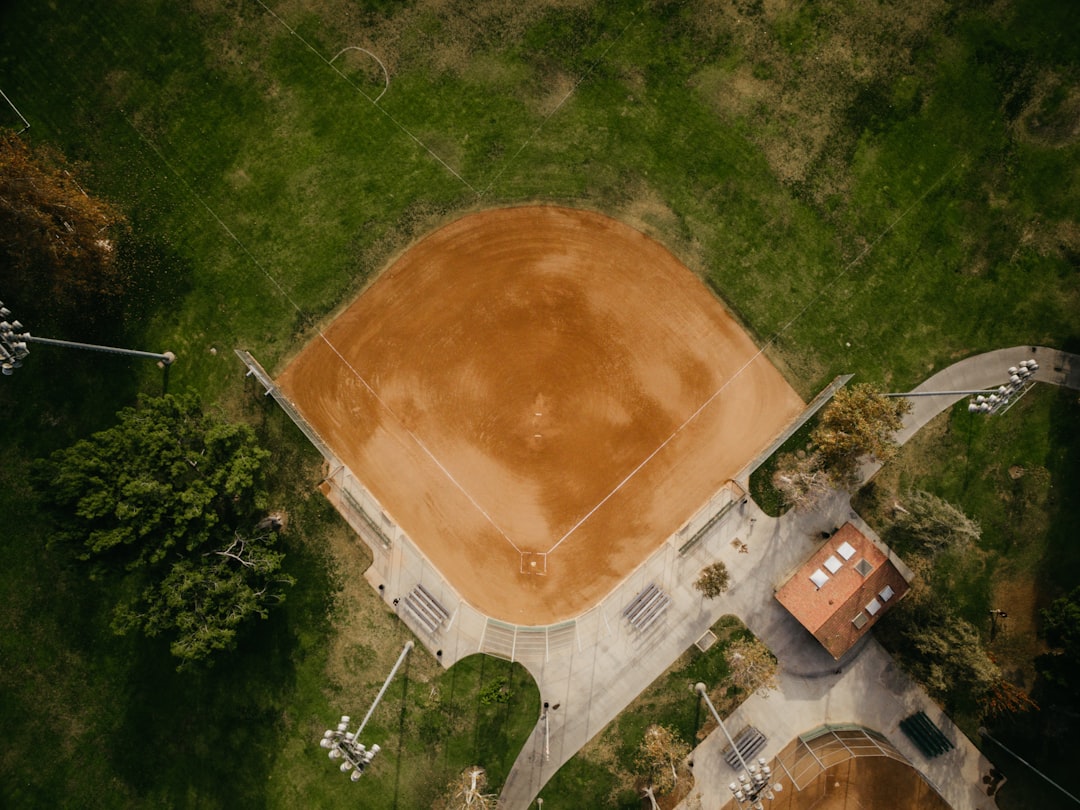Building a Successful Baseball Academy: Getting Started

In order to successfully establish a baseball training academy, it is crucial to conduct thorough research and planning to understand the local market and the demand for youth and adult programs. This involves identifying the target audience, understanding their needs, and researching competitors to gain insights into the existing landscape. By analyzing the local market, you can determine the level of interest in baseball training and development programs, as well as the specific needs of potential clients.
Furthermore, researching competitors and their offerings will provide valuable information about the types of services and programs that are currently available in the area. This will help in identifying gaps in the market and opportunities for differentiation. Understanding the strengths and weaknesses of competitors can also inform the development of a unique value proposition for the baseball academy. By conducting comprehensive research, you can gain a deep understanding of the local market, identify potential opportunities, and develop a strategic plan to position your academy for success.
In addition to market research, it is important to plan the structure and curriculum of the training programs for both youth and adult players. This involves identifying the specific skills and techniques that will be taught, as well as the level of coaching expertise required. By thoroughly researching and planning these aspects, you can ensure that the academy’s programs are tailored to meet the needs of the target audience and are competitive within the local market.
Develop a Business Plan:
Once the research and planning phase is complete, the next step is to develop a comprehensive business plan for the baseball academy. This plan should outline the mission and vision of the academy, as well as its target audience, services, and pricing structure. Clearly defining the mission and vision will help to establish the core values and goals of the academy, while identifying the target audience will ensure that the programs are tailored to meet their specific needs.
Furthermore, the business plan should include a detailed marketing strategy that outlines how the academy will attract clients and promote its programs and services. This may involve utilizing various marketing channels such as social media, local advertising, and community partnerships to reach potential clients. Additionally, financial projections should be included to demonstrate the potential profitability of the academy and attract potential investors or secure a business loan.
In developing the business plan, it is important to conduct a thorough analysis of the competitive landscape and identify opportunities for differentiation. By clearly defining the unique value proposition of the academy and outlining a strategic marketing plan, the business plan will serve as a roadmap for success and provide a clear direction for the future growth of the academy.
Secure a Location:
Finding a suitable facility for the baseball academy is a critical step in establishing a successful training program. The facility should have enough space to accommodate training areas, batting cages, and classrooms, as well as provide accessibility and visibility to attract clients. The location of the facility should be easily accessible to potential clients, whether they are coming from nearby neighborhoods or surrounding areas. Additionally, visibility is important for attracting attention and generating interest in the academy’s programs and services.
When securing a location for the academy, it is important to consider factors such as lease terms, zoning regulations, and potential renovations or modifications that may be required to meet the specific needs of the training programs. By carefully evaluating these factors and finding a location that meets the requirements of the academy, you can create an environment that is conducive to learning and development for players of all ages and skill levels.
Furthermore, securing a location that is in close proximity to schools, parks, or other community centers can help to establish a strong presence within the local community and attract potential clients. By strategically choosing a location that is convenient and visible to the target audience, you can maximize the potential for success and create a strong foundation for the baseball academy.
Hire Experienced Coaches and Staff:
| Metrics | Data |
|---|---|
| Number of experienced coaches hired | 15 |
| Number of staff members hired | 10 |
| Training hours provided to new hires | 100 |
Recruiting qualified instructors who have experience playing and coaching baseball is essential for ensuring the success of the training programs. These instructors should have a deep understanding of the game and be able to effectively teach and communicate with players of all ages and skill levels. By hiring experienced coaches and staff, you can ensure that the training programs are of high quality and provide valuable learning experiences for all participants.
In addition to coaching expertise, it is important to hire staff members who are passionate about baseball and dedicated to providing a positive learning environment for players. This may include administrative staff, support personnel, and other individuals who can contribute to the overall success of the academy. By assembling a team of experienced coaches and staff members who are committed to excellence, you can create a strong foundation for the academy’s programs and services.
Furthermore, providing ongoing training and professional development opportunities for coaches and staff can help to ensure that they are equipped with the latest techniques and best practices in baseball training. By investing in the development of your team, you can create a culture of continuous improvement and provide exceptional learning experiences for all participants.
Equipment and Supplies:
Purchasing or leasing necessary equipment such as pitching machines, batting tees, and protective gear is essential for creating a comprehensive training program. Additionally, stocking up on baseballs, bats, gloves, and other training aids will ensure that players have access to the tools they need to develop their skills. By investing in high-quality equipment and supplies, you can create a professional learning environment that is conducive to skill development and player growth.
Furthermore, ensuring that equipment is well-maintained and regularly inspected for safety is crucial for providing a secure environment for players. This may involve implementing maintenance schedules, safety protocols, and equipment checks to ensure that all gear is in good condition and ready for use. By prioritizing safety and quality in equipment and supplies, you can create a positive learning environment that fosters player development and growth.
In addition to equipment, it is important to consider other supplies such as uniforms, training materials, and promotional items that may be needed to support the operations of the academy. By carefully planning and budgeting for these items, you can ensure that all aspects of the training programs are well-supported and contribute to a positive experience for players.
Marketing and Promotion:

Creating a brand identity and developing a professional website to showcase your academy’s programs and services is essential for attracting clients. Utilizing social media platforms such as Facebook, Instagram, Twitter, and LinkedIn can help to reach potential clients and promote the academy’s offerings. Additionally, local advertising through print media, radio, or community events can help to generate awareness and interest in the training programs.
Furthermore, developing partnerships with local businesses, schools, leagues, and organizations can help to promote your academy’s programs and offer specialized training programs. By collaborating with these entities, you can establish credibility within the community and attract potential clients who are interested in high-quality baseball training. Additionally, offering promotional events or free clinics can help to generate interest in the academy’s programs and attract new clients.
In addition to traditional marketing methods, utilizing digital marketing strategies such as search engine optimization (SEO), pay-per-click (PPC) advertising, email marketing, and content marketing can help to reach potential clients online. By creating valuable content that educates and engages potential clients, you can build brand awareness and establish your academy as a trusted resource for baseball training.
Establish Partnerships:
Collaborating with local schools, leagues, and organizations is an effective way to promote your academy’s programs and offer specialized training programs. By partnering with these entities, you can gain access to a larger audience of potential clients who are interested in high-quality baseball training. Additionally, establishing partnerships can help to build credibility within the community and position your academy as a trusted resource for player development.
Furthermore, offering specialized training programs in collaboration with schools or leagues can help to meet specific needs within the community and attract players who are looking for advanced coaching or specialized skill development. By tailoring programs to meet these needs, you can create valuable learning experiences for players while also generating interest in your academy’s offerings.
In addition to promoting your academy’s programs, establishing partnerships with local businesses or sponsors can provide opportunities for additional support or resources that can contribute to the success of your training programs. By leveraging these partnerships, you can create mutually beneficial relationships that support the growth of your academy while also providing value to your partners.
In conclusion, establishing a successful baseball training academy requires thorough research and planning to understand the local market, develop a comprehensive business plan, secure a suitable location, hire experienced coaches and staff, invest in high-quality equipment and supplies, implement effective marketing strategies, and establish valuable partnerships within the community. By carefully considering each of these aspects and creating a strategic plan for success, you can position your academy for growth and create valuable learning experiences for players of all ages and skill levels.
If you’re interested in starting a baseball academy, you may also want to check out this article on howtostart.digital that provides tips on creating a successful sports business. This article offers valuable insights on the initial steps to take when launching a new venture, which can be applied to starting a baseball academy. It covers topics such as market research, business planning, and marketing strategies, all of which are essential for building a successful sports academy.
FAQs
What is a baseball academy?
A baseball academy is a facility or organization that provides training, coaching, and development programs for baseball players of all ages and skill levels.
What are the benefits of starting a baseball academy?
Starting a baseball academy can provide opportunities for players to improve their skills, receive professional coaching, and potentially pursue a career in baseball. It can also create a community hub for baseball enthusiasts and contribute to the development of the sport in a local area.
What are the key steps to starting a baseball academy?
Key steps to starting a baseball academy include conducting market research, developing a business plan, securing funding, finding a suitable location, obtaining necessary permits and licenses, hiring qualified coaches, and marketing the academy to potential players and their families.
What equipment and facilities are needed for a baseball academy?
A baseball academy typically requires baseballs, bats, gloves, helmets, protective gear, pitching machines, batting cages, training mounds, and a playing field or indoor training facility. Additionally, it may need office space, locker rooms, and seating for spectators.
What are the legal and regulatory considerations for starting a baseball academy?
Legal and regulatory considerations for starting a baseball academy may include business registration, liability insurance, compliance with child protection laws, and adherence to local zoning and building codes. It is important to consult with legal and financial professionals to ensure compliance with all relevant laws and regulations.
How can a baseball academy attract players and build a strong reputation?
A baseball academy can attract players and build a strong reputation by offering high-quality coaching and training programs, organizing competitive teams and leagues, hosting camps and clinics, and actively engaging with the local baseball community through outreach and promotional activities. Building a positive reputation through word-of-mouth and online reviews can also be beneficial.





